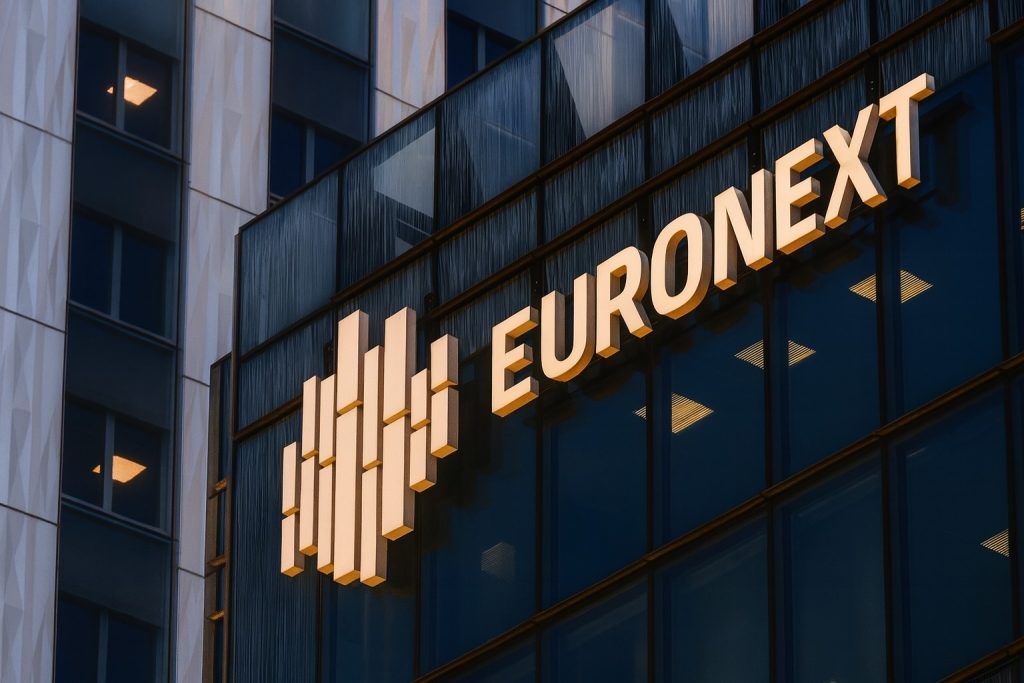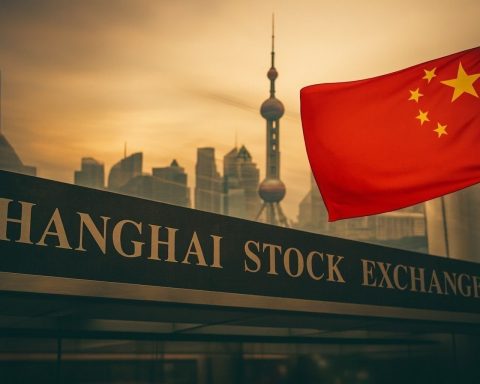Published: November 18, 2025
China’s stock markets fell on Tuesday as a global tech-led sell-off, worries over lofty artificial intelligence (AI) valuations and uncertainty about U.S. interest-rate cuts triggered a broad risk-off move across Asia. Mainland benchmarks in Shanghai and Shenzhen closed lower alongside Hong Kong’s Hang Seng Index, even as fresh data showed a small improvement in China’s youth unemployment rate. [1]
Key Index Moves: Mainland China and Hong Kong in the Red
Mainland China
- Shanghai Composite Index (SSE):
The Shanghai Composite closed at 3,939.81, down 0.81% on the day. Intraday, the index traded between 3,926.59 and 3,966.89, underscoring a steady grind lower rather than a sharp intraday crash. [2] - CSI 300 Index:
The large-cap CSI 300, which tracks 300 major A‑shares in Shanghai and Shenzhen, finished at 4,568.19, a loss of 0.65%. It opened at 4,584.79 and slipped as low as 4,552.80 before the close. [3] - Shenzhen benchmarks:
The Shenzhen Component Index fell 0.92% to around 13,080, while the ChiNext growth board dropped about 1.16% to roughly 3,069, showing slightly heavier pressure on smaller growth names. [4]
Hong Kong
- Hang Seng Index (HSI):
Hong Kong’s flagship Hang Seng Index closed at 25,930.03, down 1.72% (a fall of 454 points). That’s its steepest one-day percentage drop since October 31. [5] - Hang Seng China Enterprises Index (HSCEI):
The index of mainland companies listed in Hong Kong slipped 1.65% to 9,174.84. [6] - Hang Seng Tech Index (HSTECH):
Tech-heavy names bore the brunt of selling: the Hang Seng Tech Index declined 1.93% to 5,645.73. [7]
Despite today’s setback, mainland and Hong Kong benchmarks are still sitting on solid year‑to‑date gains: the Shanghai Composite remains up around the high teens in percentage terms for 2025, while the Hang Seng has surged close to 30% so far this year, according to data referenced in market reports. [8]
Global Backdrop: AI Valuation Fears and Fed Uncertainty
Today’s move in Chinese stocks cannot be separated from the broader global picture.
- Tech-led global sell-off:
Across Asia, equity markets slid to around one‑month lows, with Japan’s Nikkei 225 dropping about 3% and South Korea’s KOSPI down roughly 3.3% in heavy tech selling. [9] - AI and Nvidia in focus:
Investors are increasingly nervous that the multi‑year boom in AI‑related names may have pushed valuations too far. Nvidia’s upcoming earnings report this week is widely seen as a critical test for the AI trade and is contributing to the cautious tone across global tech and semiconductor supply chains — including many Asia and China‑linked names. [10] - U.S. data backlog and Fed rate-cut bets:
A U.S. government shutdown delayed the release of key economic indicators, including the nonfarm payrolls report now due Thursday. Markets have dialed back expectations of a December Federal Reserve rate cut; one Reuters summary notes that the implied probability of a 25‑basis‑point move has fallen from over 60% to just above 40%. [11] - Risk-off mood beyond equities:
Bitcoin has dropped sharply from recent highs, trading below the USD 90,000 mark at one point, while safe‑haven currencies such as the yen, Swiss franc and U.S. dollar have seen renewed demand — a classic sign of global risk aversion. [12]
In this environment, Chinese and Hong Kong stocks are being hit less because of domestic headlines and more because they are plugged into a global equity and tech cycle that’s taking a breather.
Sector Moves: New Energy and Tech Lead the Declines
New energy stocks under heavy pressure
One of the clearest themes on the mainland today was the sharp pullback in new energy names:
- A key CSI sub‑index tracking new energy plays fell about 3.2%.
- Another related new energy sub‑index dropped roughly 3.6%. [13]
These sub‑indices include solar, wind, battery and EV supply‑chain stocks, which had previously benefited from strong policy support and investor enthusiasm. Today’s slide suggests traders are taking profits in high‑beta “green” themes amid a broader de‑risking.
RTHK’s market wrap also highlighted steep losses in coal, chemicals, pesticides and fertilizers, while more defensive or domestically oriented areas — such as furniture, electronics information, and printing and packaging — managed gains. [14]
Hong Kong tech giants and placement news
Hong Kong’s tech names amplified the region’s risk‑off tone:
- NetEase slipped around 1.6%.
- Kuaishou Technology dropped roughly 3.2%.
- EV makers Li Auto and BYD fell about 2.9% and 3.8%, respectively.
- Xiaomi lost close to 2.8%, while food‑delivery giant Meituan shed about 1.7%. [15]
In addition, aluminium producer China Hongqiao Group tumbled nearly 6% after announcing a sizeable share placement of up to 400 million shares at a discount to its previous close — a classic overhang for existing shareholders. [16]
With the Hang Seng Tech Index down nearly 2%, it’s clear that AI and growth‑oriented names in Hong Kong are being repriced alongside their global peers.
Macro Update: Youth Unemployment Eases, But Stays High
While markets were selling off, Beijing released fresh labour‑market data that will matter for medium‑term sentiment toward China’s economy and, by extension, its equity market.
According to China’s National Bureau of Statistics:
- The youth unemployment rate (16–24, excluding college students) fell to 17.3% in October, down from 17.7% in September, reaching a four‑month low. [17]
- For 25–29‑year‑olds (excluding students), unemployment held steady at 7.2%. [18]
- Among those aged 30–59, the jobless rate edged down to 3.8% from 3.9%.
- The overall surveyed urban unemployment rate across all age groups slipped to about 5.1%, from 5.2% in September, also a recent low. [19]
For investors, this data is a mixed bag:
- Positive sign: Youth unemployment remains very high but is finally moving lower after past peaks above 18–19%, suggesting that targeted job‑creation and stimulus policies may be gaining some traction. [20]
- Persistent challenge: Double‑digit youth joblessness still points to fragile consumer confidence among younger households — an important cohort for discretionary spending, housing demand and long‑term growth.
Markets did not rally on the data, but improving labour indicators can help underpin the narrative that China’s recovery, while uneven, is not stalling outright.
Strategy View: Why Some Analysts Still Like Chinese Equities
Despite today’s sell‑off, several strategists remain constructive on Chinese stocks heading into 2026.
A recent UBS China market strategy note, cited in local financial media, argues that:
- Chinese equities could see “another positive year” ahead as key tailwinds from 2025 continue, including AI adoption, accommodative monetary policy, sustained fiscal expansion and ample market liquidity. [21]
- The bank’s preferred areas include:
- Internet platforms and hardware tech, which they see as direct beneficiaries of the AI and digitalisation cycle.
- Brokerage stocks, on expectations of higher trading volumes and capital‑market reforms.
- At the same time, UBS is turning more cautious on high‑dividend “bond‑proxy” stocks, where yields have been bid down, and is highlighting “going‑abroad” Chinese companies that can tap global growth rather than rely purely on domestic demand. [22]
Separate reporting also notes that UBS has drawn up a list of Hong Kong‑listed and U.S.‑listed Chinese companies with the greatest potential upside to FY26 earnings, underscoring that foreign institutions are still looking for selective opportunities even as headline indices wobble. [23]
This constructive institutional positioning helps explain why, despite frequent risk‑off days like today, the Shanghai Composite and Hang Seng remain strongly positive year‑to‑date.
What Today’s Moves Mean for Investors
For traders and long‑term investors watching the China stock market today, several themes stand out:
- Today was more about global risk sentiment than new China-specific shocks.
The selling in Shanghai and Hong Kong closely tracked a broader Asia‑Pacific pullback and a Wall Street tech reset, driven by worries over AI valuations and uncertainty around future Fed cuts. [24] - High‑beta sectors remain volatile.
New energy, EVs and internet platforms, which led gains earlier in the year, are also the first to be sold when markets get nervous. That pattern continued today, with new energy indices down over 3% and leading tech names in Hong Kong posting multi‑percentage declines. [25] - Macro fundamentals are nudging in the right direction, but not enough to offset global shocks.
Slightly lower youth and overall unemployment numbers are a step in the right direction, yet they haven’t changed the near‑term reality that Chinese assets are heavily influenced by U.S. data, Fed expectations and global tech sentiment. [26] - Valuation and positioning remain key.
With the Shanghai Composite and Hang Seng up double‑digits year‑to‑date, some consolidation is natural, and institutional players appear to be rotating within Chinese markets rather than abandoning them altogether — favouring internet, hardware tech and brokers over high‑dividend defensives. [27]
Looking Ahead
In the coming days, China‑focused investors will be watching:
- Nvidia’s earnings and the broader reaction in global AI names.
- The delayed U.S. jobs report and other economic releases that could shift expectations for Fed policy in December and beyond. [28]
- Any further policy signals from Beijing, particularly on fiscal support, property stabilization and youth employment initiatives.
For now, November 18, 2025 will likely go down as a classic “risk‑off” session: a day when Chinese stocks were pulled lower not by a domestic crisis, but by a global reset in optimism around tech and interest rates.
This article is for informational purposes only and does not constitute investment advice. Always do your own research or consult a licensed financial advisor before making investment decisions.
References
1. www.reuters.com, 2. www.investing.com, 3. www.investing.com, 4. news.rthk.hk, 5. english.news.cn, 6. english.news.cn, 7. english.news.cn, 8. news.rthk.hk, 9. www.reuters.com, 10. www.reuters.com, 11. www.tradingview.com, 12. www.reuters.com, 13. www.tradingview.com, 14. news.rthk.hk, 15. amp.scmp.com, 16. amp.scmp.com, 17. www.reuters.com, 18. www.reuters.com, 19. www.tradingview.com, 20. tradingeconomics.com, 21. www.tradingview.com, 22. news.rthk.hk, 23. www.aastocks.com, 24. www.reuters.com, 25. www.tradingview.com, 26. www.reuters.com, 27. news.rthk.hk, 28. www.reuters.com










